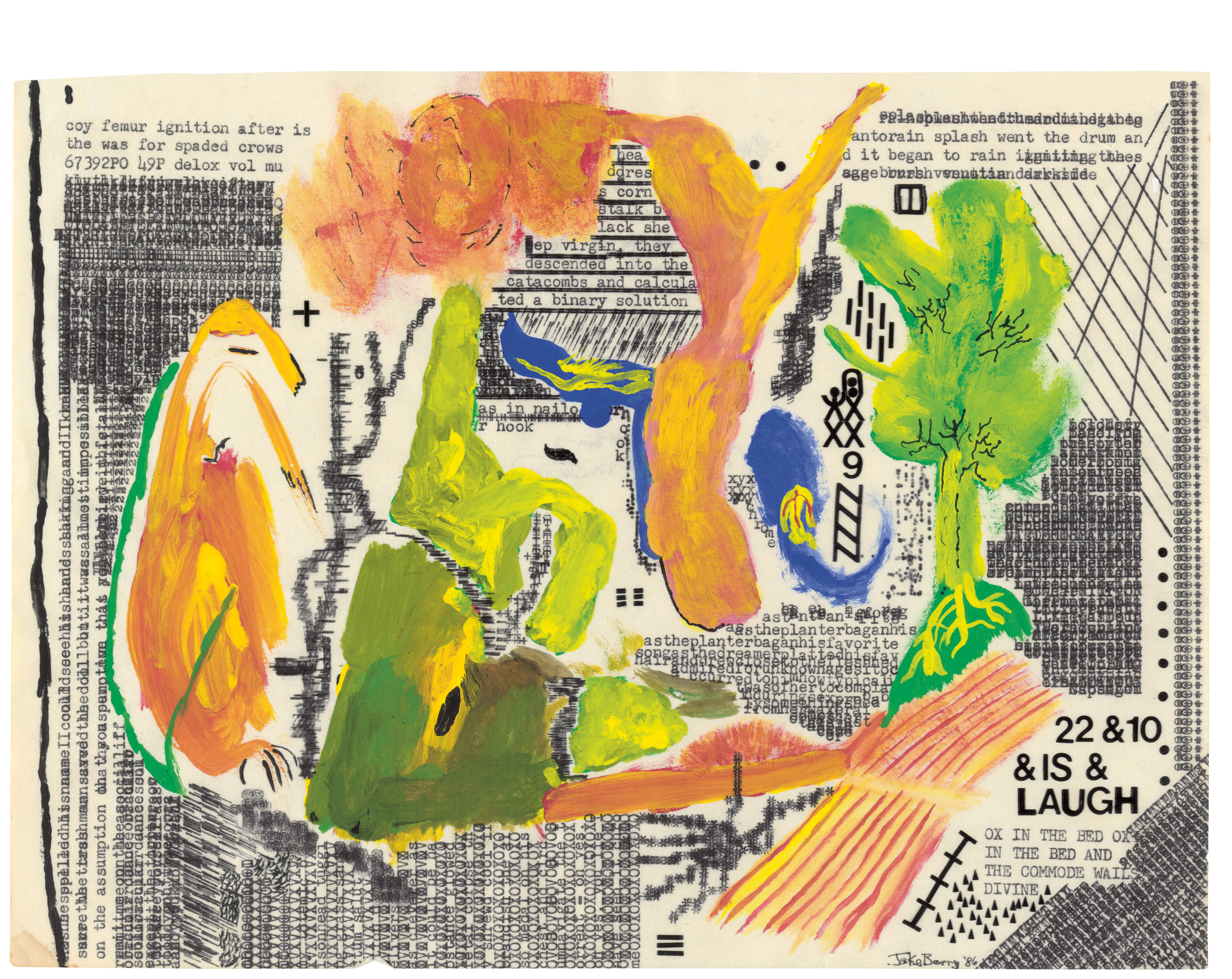
Anna
Bella Geiger, “Page from O Novo Atlas parte 1” (1977) (courtesy of the
Sackner Archive of Concrete and Visual Poetry, © 2015 Anna Bella Geiger)

jw
curry, “MAB[2]” (ca. 1992) (courtesy of the Sackner Archive of Concrete
and Visual Poetry, © 2015 jw curry) (click to enlarge)
“The images in this collection are clearly not made on a computer,” graphic designer John Maeda writes in the book’s preface. “What is it about them? It’s their imperfection; their mechanical imperfection, carefully mixed with human sensibilities and grit.”

Jake
Berry, “22 & 10 & Is & Laugh” (1987) (courtesy of the
Sackner Archive of Concrete and Visual Poetry, © 2015 Jake Berry)
When typing in a digital word processor, an artist can’t, for instance, smear ink or reposition paper. The work in The Art of Typewriting is a testament to how technical constraints can force artists to be more resourceful about their creative processes. It would be tedious or perhaps even impossible to use a program like Photoshop or Word to reproduce some of the common techniques employed in artistic typewriting. Take the overstrike — while it’s a simple process on a typewriter, overstriking in Photoshop is cumbersome and requires adding new layers. So, in addition to being “unhackable” and internet-free, there are other advantages ye olde typewriter has over today’s sophisticated word processors and design programs. Luckily, eBay has plenty for sale.

Maurizio
Nannucci, “Dattilograme Typwriter Poem” (1964) (courtesy of the Sackner
Archive of Concrete and Visual Poetry, © 2015 Maurizio Nannucci)

Tom
Phillips, “Pages of A Human Document” (1966–73) (courtesy of the
Sackner Archive of Concrete and Visual Poetry, © 2015 Tom Phillips)

Tom
Phillips, “Pages of A Human Document” (1966–73) (courtesy of the
Sackner Archive of Concrete and Visual Poetry, © 2015 Tom Phillips)

Frank Singleton, “Abstract 3” (1986) (courtesy of the Sackner Archive of Concrete and Visual Poetry, © 2015 Frank Singleton)

Eduardo Kac, “Luz” (1981) (courtesy of the Sackner Archive of Concrete and Visual Poetry, © 2015 Eduardo Kac)

Jochen
Gerz, “Porträt des Künstlers als junger Bourgeois” (1970) (courtesy of
the Sackner Archive of Concrete and Visual Poetry, © 2015 Jochen Gerz)
(click to enlarge)

Leandro
Katz, “Word Column IV: Puno | Altamira” (ca. 1971) (courtesy of the
Sackner Archive of Concrete and Visual Poetry, © 2015 Leandro Katz)

Leslie
Nichols, “Siobahn (Grimke 1837)” (2011) (courtesy of the Sackner
Archive of Concrete and Visual Poetry, © 2015 Leslie Nichols)

Vittore Baroni, “Memento Mori” (1988) (courtesy of the Sackner Archive of Concrete and Visual Poetry, © 2015 Vittore Baroni)

Ruth
Wolf-Reinhardt, “Series Towers” (ca. 1980) (courtesy of the Sackner
Archive of Concrete and Visual Poetry, © 2015 Ruth Wolf-Reinhardt)

Steve
McCaffery, “Second Panel” (1970–75) (courtesy of the Sackner Archive of
Concrete and Visual Poetry, © 2015 Steve McCaffery)



No comments:
Post a Comment
Note: only a member of this blog may post a comment.